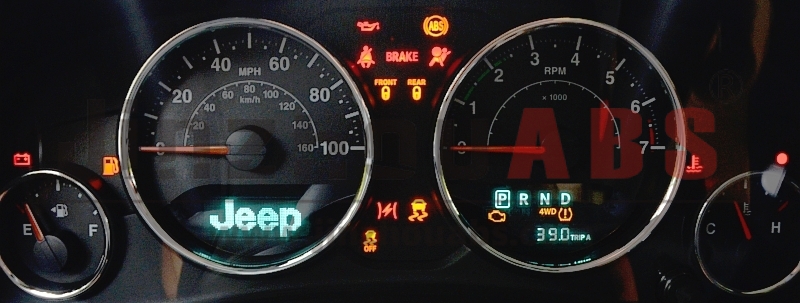ABS and Traction Control Light On in Jeep Compass?
If your Jeep Compass suddenly lights up the ABS (Anti-lock Braking System) and traction control indicators on the dashboard, you’re not alone—and you shouldn’t ignore it. These lights typically signal that a critical safety system has malfunctioned. Driving with these warning lights on could pose a serious safety risk.
In this article, we’ll walk you through the common causes behind these alerts and give you practical, easy-to-follow troubleshooting steps to help restore your vehicle’s safety features.
What Do ABS and Traction Control Systems Do?
Before diagnosing the issue, it’s important to understand what these two systems are designed to do:
ABS (Anti-lock Braking System): Prevents the wheels from locking up during hard braking, which helps you maintain control of the steering.
Traction Control (ESP or TCS): Helps prevent wheel slip during acceleration, especially on slippery roads or sharp turns.
If these lights are on, your vehicle’s stability and braking assistance might not work as intended.
Top 4 Reasons Why ABS and Traction Control Lights Are On
Faulty or Dirty Wheel Speed Sensors
This is the most common issue. Each wheel has a sensor that reads wheel speed and sends the data to the ABS control module. If the sensor is dirty, damaged, or misaligned, it can send faulty readings that trigger a warning.
Fix Tips:
- Remove the wheel and clean the sensor area.
- Check the gap between the sensor and tone ring.
- Replace any corroded or broken sensors.
Loose or Damaged ABS Wiring
ABS systems rely on a network of electrical wires. Loose connections, corroded plugs, or broken wires can cause communication failure, leading to warning lights.
Fix Tips:
- Inspect all ABS connectors for tight fit.
- Use a multimeter to check voltage or resistance.
- Replace or repair any damaged wiring.
Low Brake Fluid or Hydraulic System Issue
ABS systems rely on brake fluid pressure. If the fluid level is low or there’s a leak, it may reduce pressure in the system, triggering a fault.
Fix Tips:
- Open the hood and check the brake fluid reservoir level.
- Top off the fluid if it’s below the minimum line.
- Check for leaks around brake lines and master cylinder.
Faulty Control Module (ECU) or Software Glitch
The ABS system’s “brain” is the ECU (Electronic Control Unit). If the module fails or malfunctions, it can misinterpret signals and illuminate both warning lights.
Fix Tips:
- Use an OBD-II scanner to read fault codes.
- Check if the ECU is overheating or water-damaged.
- Reprogram or replace the control unit if necessary.
Why ABS and Traction Control Are Critical for Driving Safety
These systems play a crucial role in helping you stay safe on the road:
| Feature | Benefit |
| Prevent wheel lock-up | More effective braking |
| Maintain stability | Reduce risk of skidding or fishtailing |
| Retain steering control | Safer maneuvering during emergencies |
| Reduce tire wear | Smoother stops and longer tire life |
Especially in wet or icy conditions, these systems are life-saving technologies.
Quick Troubleshooting Checklist
Check if the lights flash or stay on: Flashing might mean a temporary fault, while constant lights usually indicate a more serious issue.
Clean all wheel sensors: Often solves the problem quickly.
Use an OBD-II reader to check error codes: This pinpoints the fault.
Inspect brake fluid and wiring: Simple issues can be fixed at home.
Still unresolved? Visit a professional repair shop immediately.
Frequently Asked Questions (FAQ)
Q1: Is it safe to drive with the ABS light on?
You can drive to a repair shop slowly, but avoid highways or risky roads.
Q2: What if only the traction control light is on?
It could still be a sensor issue or a minor slip detection. It’s worth checking.
Q3: How much does a new ABS sensor cost?
Typically ranges from $30 to $100 per sensor, depending on the vehicle model.
Q4: Will ABS warning lights affect a vehicle inspection?
Yes, safety system faults usually fail inspection.
Q5: If the lights go off by themselves, is it fixed?
Not necessarily. Temporary errors can clear themselves but still leave fault codes.
Q6: Can I replace the sensor myself?
Yes, if you’re comfortable with basic tools and vehicle mechanics.
Final Thoughts: Don’t Ignore Dashboard Warning Lights
When the ABS and traction control lights come on in your Jeep Compass, it’s your car’s way of telling you something is wrong. Whether it’s a dirty sensor or a failing ECU, these issues are usually manageable with a little maintenance and timely diagnostics.



